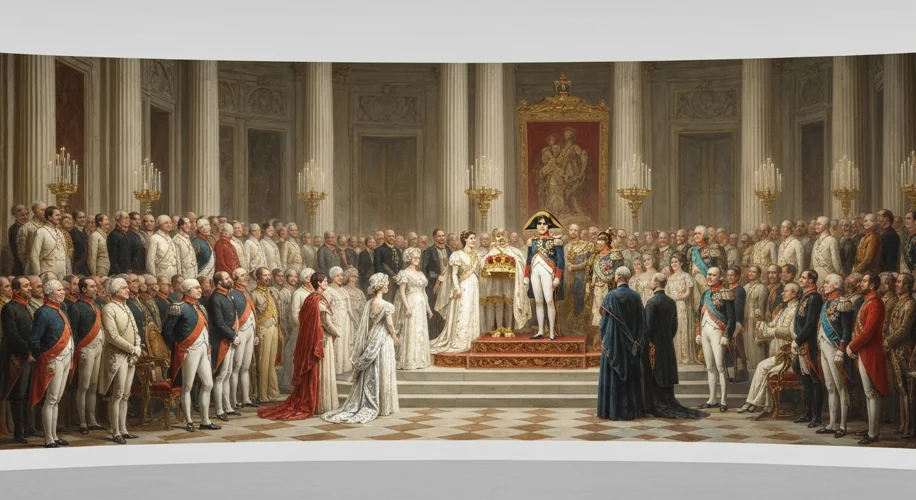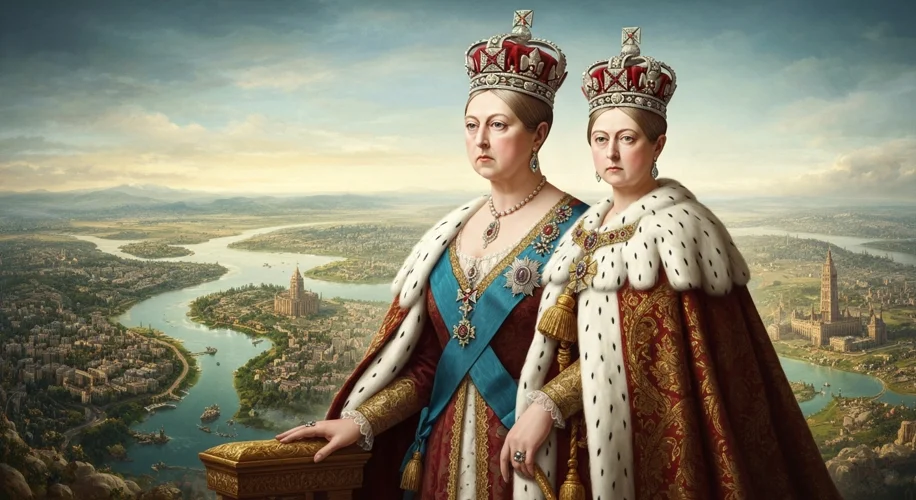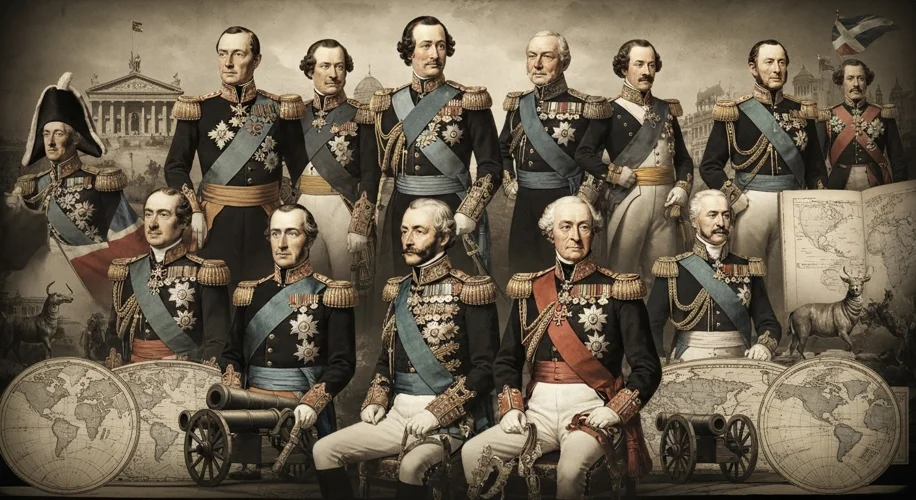The 19th century, a period of seismic shifts in politics, industry, and society, also witnessed a peculiar phenomenon: the dramatic resurgence of the title ‘Emperor.’ Far from being a relic of antiquity, the imperial mantle was eagerly donned by leaders across Europe and beyond, transforming it into a potent symbol of power, ambition, and national destiny.
For centuries, the Roman Empire had been the benchmark of imperial grandeur. Yet, as the medieval era gave way to the age of nation-states, the title of Emperor, once synonymous with universal dominion, had become somewhat diminished. It was primarily associated with the Holy Roman Emperors, a fragmented entity, and the Tsars of Russia, ruling over a vast but often insular empire. But the winds of change in the 19th century blew a new life into this venerable title.
One of the most significant moments in this imperial revival was the proclamation of Napoleon Bonaparte as Emperor of the French in 1804. Emerging from the chaos of the French Revolution, Napoleon seized upon the imperial title not merely as a personal elevation, but as a means to legitimize his rule, project power, and hark back to a glorious Roman past. His coronation was a carefully staged spectacle, echoing ancient ceremonies, and his ambition was to forge a new European empire under his imperial banner.

Following Napoleon’s dramatic rise and fall, the allure of the imperial title did not wane. Instead, it proved remarkably contagious. In 1852, Louis-Napoleon Bonaparte, Napoleon’s nephew, seized power in France and, in 1852, declared himself Emperor Napoleon III. This second French Empire, though less expansive than its predecessor, demonstrated the enduring appeal of the imperial title in post-Napoleonic Europe. It signaled a desire for stability and strong leadership, often presented as a bulwark against revolutionary fervor.
Across the Channel, Great Britain, already a global superpower through its vast colonial network, formally embraced the imperial title in 1876 when Queen Victoria was proclaimed Empress of India. This move was not merely symbolic; it was a strategic assertion of British dominance over its most prized possession and a clear signal to other European powers. The “Sun Never Sets” on the British Empire, and the title of Empress perfectly encapsulated this expansive dominion. The image of Victoria, the stoic empress presiding over a quarter of the world’s population, became an enduring icon of Victorian imperial power.

Germany’s unification under Otto von Bismarck culminated in the proclamation of the German Empire in 1871, with King Wilhelm I of Prussia becoming Emperor Wilhelm I. This was a momentous occasion, born out of military victories and nationalist aspirations. The creation of a powerful German Empire, with an emperor at its head, dramatically altered the European balance of power and signaled the decline of older empires like Austria.
Even in nations far from the European heartland, the imperial title found fertile ground. In 1867, Emperor Meiji ascended to the throne in Japan, ushering in the Meiji Restoration. This period saw Japan rapidly modernize and transform from an isolated feudal society into a major world power, adopting Western political structures, including an imperial system, to project its newfound strength and assert its place on the global stage.
In Brazil, Emperor Pedro II ruled for much of the 19th century, presiding over a period of relative stability and modernization. His reign ended with the abolition of the monarchy in 1889, but the very existence of a Brazilian Empire highlights the pervasive influence of the imperial model across different continents.
Why this widespread adoption of the imperial title? Several factors converged. Firstly, the Napoleonic legacy was immense. Napoleon had demonstrated how an emperor could consolidate power, inspire national pride, and reshape international relations. His successes, even in defeat, provided a potent blueprint.
Secondly, the concept of empire was intrinsically linked to colonialism. As European powers carved up Africa and Asia, the title of Emperor served as a powerful symbol of dominion over vast territories and diverse populations. It conferred a sense of legitimacy and superiority upon the imperial power.
Thirdly, nationalism played a crucial role. In a continent bristling with competing nationalisms, the title of Emperor offered a way to rally a diverse population under a single, powerful figurehead. It evoked a sense of shared history, destiny, and greatness.

The 19th century’s imperial resurgence was a complex phenomenon, driven by a potent mix of ambition, historical resonance, and the geopolitical realities of the era. The title ‘Emperor,’ once a symbol of a fading universal order, was re-energized and repurposed, becoming a defining feature of a world increasingly shaped by powerful, ambitious, and expansionist states.

